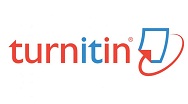CAN THE DIRECT INSTRUCTION LEARNING MODEL ASSISTED BY DIGITAL VISUAL MEDIA IMPROVE THE SOCIAL SCIENCE LEARNING ACHIEVEMENT?
Abstract
Purpose –This study examines the effectiveness of the Direct Instruction (DI) learning model when supported by digital-visual media in improving the learning achievement of elementary school students in social studies. The study aims to determine whether integrating DI with digital-visual aids can significantly enhance students’ understanding and retention of social studies material.
Methodology – This classroom action research is conducted through 4 stages: planning, implementation, observation, and reflection. The research subjects were 26 fifth-grade students and was conducted collaboratively with teachers at SDN Klegen 04.
Findings – State the main results of the study. Numerical data may be included, but should be kept to a minimum. State the conclusions and implications. The DI learning model can improve students' social studies learning achievement. This is evidenced by students who get the same or higher scores than the KKM 70.00, increasing from cycle I to cycle II. In cycle I, the completion of learning outcomes reached a class average of 72.3. While in cycle II, the completion of learning outcomes on average increased by 84.8.
Contribution – Who would benefit from this study? These findings suggest that combining Direct Instruction with digital-visual aids can effectively improve elementary students' academic achievement in social studies. Therefore, educators are encouraged to adopt this approach to foster more meaningful and impactful learning, particularly in content-heavy subjects like social studies.Keywords
Full Text:
PDFReferences
Adams, G., & Carnine, D. (2003). Direct instruction. Handbook of Learning Disabilities, 403–416.
Anggarawati, I. G. A. A., Kristiantari, M. R., & Asri, I. G. A. A. S. (2014). Pengaruh Make a Match Berbantuan Media Kartu Gambar Terhadap Hasil Belajar IPA SD. Jurnal Mimbar PGSD Universitas Pendidikan Ganesha, 2(1), 1–10. https://doi.org/http://dx.doi.org/10.23887/jjpgsd.v2i1.2146
Caballero, M., & Liss, J. (2023). Universal Design for Learning and Direct Instruction in a Special Education Practicum. Journal of Technology-Integrated Lessons and Teaching, 2(1), 88–94.
Calunangan, F. M. D., & Sonsona, R. P. J. V. (2025). Determining the Effectiveness of Direct Instruction in Developing the Reading Skills of Students with Autism Spectrum Disorder. Canadian Journal of Family and Youth/Le Journal Canadien de Famille et de La Jeunesse, 1–15.
Degner, M., Moser, S., & Lewalter, D. (2022). Digital media in institutional informal learning places: A systematic literature review. Computers and Education Open, 3, 100068. https://doi.org/10.1016/j.caeo.2021.100068
Fitri, L. J. (2024). Meningkatkan Hasil Belajar Bahasa Inonesia Menggunakan Model Direct Instruction Berbasis Kelompok Dengan Media Audiovisual Siswa Kelas V SDN 004 Bonai. Indonesian Journal of Innovation Science and Knowledge, 1(1), 403–410.
Fitter, E. A. (2024). The Use of Direct Instruction Curriculum to Implement an Interdisciplinary Team Decision-Making Model. The Chicago School of Professional Psychology.
Hasanah, H., Mastuang, M., & Dewantara, D. (2023). Pengembangan Bahan Ajar Bermuatan Ayat-Ayat Al-Quran Pada Materi Dinamika Partikel Dengan Model DirecT Instruction Untuk Melatihkan Keterampilan Pemecahan Masalah. Quantum: Jurnal Inovasi Pendidikan Sains, 14(1), 41–55.
Hubelbank, J., Dubosarsky, M., Kayumova, S., Davis, T., Sann, N., Fortin, S., & Smith, G. (2024). Integrating computational thinking practices into early childhood education in culturally responsive ways: Insights from research–practice partnership. Future in Educational Research, (July), 359–381. https://doi.org/10.1002/fer3.49
Mabrur, A. S., & Mubarok, M. Z. (2021). Pengaruh Model Pembelajaran Direct Instruction Terhadap Hasil Belajar Teknik Dasar Guling Depan Senam Lantai The Effect of Direct Instruction Learning Model on Learning Outcomes for the Basic Technique of Forward Roll Gymnastics.
Manawan, S. V. (2021). penerapan model pembelajaran examples non examples untuk meningkatkan hasil belajar ips siswa kelas III sekolah dasar. Edu Primarry Journal : Jurnal Pendidikan Dasar, 2(2), 159–165. https://doi.org/http://ejurnal-mapalus-unima.ac.id/index.php/eduprimar
Mason, L., & Otero, M. (2021). Just how effective is direct instruction? Perspectives on Behavior Science, 44(2), 225–244.
Murwantono, M., & Sukidjo, S. (2015). Peningkatan hasil belajar IPS dengan model problem based learning berbantuan media stimulan gambar. Harmoni Sosial: Jurnal Pendidikan IPS, 2(1), 30–41.
Setiadi, H. (2016). Pelaksanaan penilaian pada Kurikulum 2013. Jurnal Penelitian Dan Evaluasi Pendidikan, 20(2), 166–178. https://doi.org/10.21831/pep.v20i2.7173
Shammas, N. (2023). An Exploration of Direct Instruction: Why Teaching Matters. Future Trends in Education Post COVID-19, 319.
Simamora, R. M. (2022). Analyzing Multiple Intelligence Theory in Taiwan Elementary School: Tongmen Elementary and Tabalong Elementary School. Studies in Learning and Teaching, 3(1), 1–15. https://doi.org/10.46627/silet.v3i1.82
Somantri, M. N. (2001). Menggagas Pembaharuan Pendidikan IPS. Bandung: PT Remaja Rosdakarya.
Stockard, J. (2021). Building a more effective, equitable, and compassionate educational system: The role of direct instruction. Perspectives on Behavior Science, 44(2), 147–167.
Wibowo, D. C., Sutani, P., & Fitrianingrum, E. (2020). Penggunaan Media Gambar Seri Untuk Meningkatkan Kemampuan Menulis Karangan Narasi. Jurnal Studi Guru Dan Pembelajaran, 3(1), 51–57. https://doi.org/10.30605/jsgp.3.1.2020.245
DOI: https://doi.org/10.36987/jes.v12i5.7528
Refbacks
- There are currently no refbacks.
Copyright (c) 2025 Supri Wahyudi Utomo

This work is licensed under a Creative Commons Attribution-NonCommercial-ShareAlike 4.0 International License.









1.jpg)






